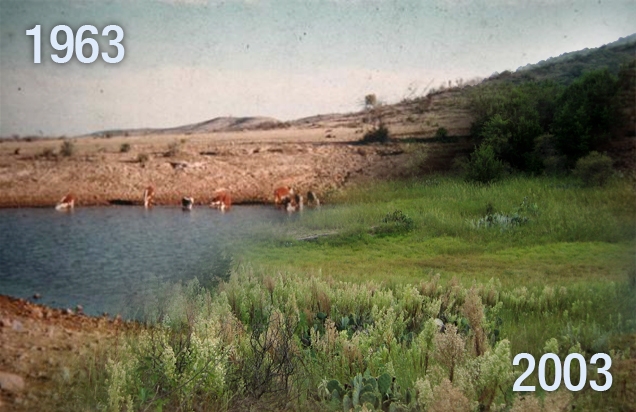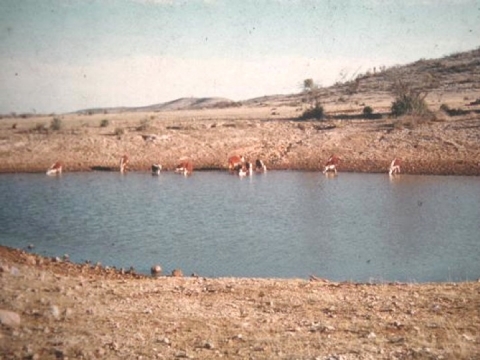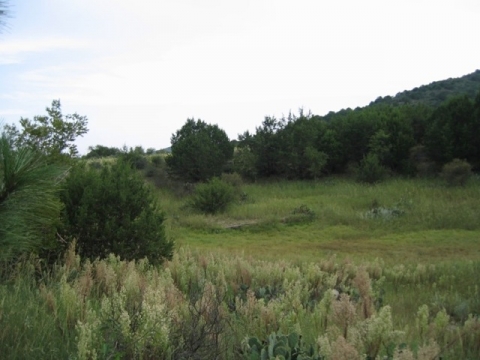[ English | Español ]
Authors: Sarah Streat and Katherine Paul
“A nation that destroys its soil destroys itself.” – Franklin D. Roosevelt
In his opening address to the Savory Institute global conference in London on August 1, Alan Savory said that while agriculture is the foundation of civilization and of any stable economy, it is also, when poorly practiced, the most destructive industry—even more so than coal mining.
The World Wildlife Fund estimates that since 1960, a third of the world’s arable land has been lost through erosion and other degradation. Much of the destruction is caused by increased demand for GMO corn, soy, cotton, canola, sugar beet and alfalfa crops, used to feed factory farm animals, to produce highly-subsidized yet inefficient biofuels and to make processed foods.
The perpetual cycle of planting mono-crops, saturating the crops and fields with toxic chemicals, tilling them under and replanting them destroys the soil and degrades the land by depleting soil nutrients and causing erosion. Overgrazing pastures instead of managing livestock herds holistically, using a system of planned rotational grazing, is equally destructive.
Destruction of land and soil by poor farming isn’t inevitable, said John Liu, who also spoke at the Savory conference. Liu told the audience we have to connect economic growth to ecological restoration—and “restoring ecological function is the only way we will survive.”
How do we do it? In large part through “regenerative agriculture,” in combination with reducing fossil fuel emissions and reversing global deforestation.
Can we do it? By all accounts, yes. But as Savory cautioned, regenerative agriculture represents a small minority, probably 3 – 5 percent, of today’s global agriculture. Sadly, 90 percent of farmers, policy-makers and the public still believe in an agricultural model based on chemistry, technology and faulty policy. “We’re not even at the table,” Savory said.
But we could be. One of the key ways to do that, Savory said, is to convince consumers, who far outnumber producers, that agriculture has to change. Organic Consumers Association recommends consumers do that by boycotting GMOs and factory-farmed foods, in keeping with the advice on our popular bumper sticker: “Cook Organic not the Planet.”
Our failure to do so will not only lead to hunger and poverty, but it will represent a huge missed opportunity to reverse global warming.
Beyond ‘sustainable’
Let’s face it. “Sustainable” is not a sexy word. It suggests a relationship that is merely maintained—plodding along on an existing plane.
It’s time to move beyond the notion of “sustainable” agriculture to a model of agriculture that restores and rejuvenates soils, farms, economies and communities.
So what is “Regenerative agriculture”? Dr. Christine Jones, who founded Amazing Carbon, describes regenerative agriculture as a diverse set of farming practices that replenish and reactivate the soil. “When agriculture is regenerative, soils, water, vegetation and productivity continually improve rather than staying the same or slowly getting worse.”
The key to regenerative agriculture is that it not only “does no harm” to the land but actually improves it, using technologies that regenerate and revitalize the soil and the environment. Regenerative agriculture is dynamic and holistic, incorporating permaculture and organic farming practices, including conservation tillage, cover crops, crop rotation, composting, mobile animal shelters and pasture cropping, to increase food production, farmers’ income and especially, topsoil.
Regenerative agriculture leads to healthy soil, capable of producing high quality, nutrient dense food while simultaneously improving, rather than degrading land, and ultimately leading to productive farms and healthy communities and economies.
What makes up healthy soil? According to Jones, healthy topsoil is composed of weathered rock minerals, air, water and living things such as plant roots, microorganisms, insects and worms and the organic materials they produce.
There are six essential ingredients for soil formation, Jones says:
1. Minerals
2. Air
3. Water
4. Living things in the soil (plants and animals) and their by-products
5. Living things on the soil (plants and animals) and their by-products
6. Intermittent and patchy disturbance regimes (such as planned grazing or slashing)
Unlike mono-crop agriculture which relies heavily on chemical fertilizers, pesticides and herbicides, erodes the soil through excessive tilling, and doesn’t protect the with cover crops, regenerative agriculture produces healthy soil, while at the same time producing food (both plant and animal-based). Because regenerative agriculture doesn’t strip the soil of nutrients and leave it depleted, food grown in that soil tastes better, and has a higher nutrient content.
Can regenerative agriculture save the climate?
Healthy soils not only produce healthy food, healthy economies and healthy communities, but as it turns out, healthy soil just may be the best tool we have to reverse global warming.
According to a recent study by the Rodale Institute, if regenerative agriculture were practiced globally, 100 percent of current, annual carbon dioxide (CO2) emissions would be sequestered.
The Rodale Institute has been conducting its Farming Systems Trial (FST) since1981. It’s the longest-running test comparing organic and conventional cropping systems. Data from the test shows that organic, regenerative agriculture reduces CO2 by taking advantage of natural ecological systems to extract carbon from the atmosphere and sink it into the soil. According to the data, soil managed organically can accumulate about 1,000 pounds of carbon-per-acre foot of soil each year—equal to about 3,500 pounds of carbon dioxide-per-acre taken from the air and sequestered into soil organic matter.
While commercial agricultural practices are some of the largest contributors to global warming, regenerative agriculture practices are carbon neutral and actually reverse climate change. Carbon-rich soil doesn’t need synthetic fertilizers. This leads to further reduction of greenhouse gas emissions, as both the production and use of fertilizers generate CO2.
Transitioning on a global scale
Regenerative agriculture practices rely on knowledge and care, rather than expensive farming equipment, seeds, fertilizers and pesticides. While in the short term, they may produce slightly lower yields than conventional, chemical-intensive crops, over time they produce higher yields which lead to greater financial security for farmers, especially in communities that are economically dependent on agriculture.
More and more small-scale farmers are using regenerative practices to cultivate land and grow food. The movement has a strong collaborative voice in places like Australia and the UK, where innovative farmers are sharing their knowledge both informally, and in structured courses and workshops.
Regenerative farming is also practiced widely across the U.S. by many local, small-scale farms, though they may not be using the term “regenerative agriculture.” Farms like Polyface Farms in Virginia, Jubilee Farm in Washington State, and the Marin Carbon Project in California provide good models for how organic, regenerative farming can lead to prosperous and healthy communities.
But if we’re going to restore the world’s vast tracts of degraded lands, and avert a climate disaster, we’re going to need to transition on a global scale from today’s dominant chemical-intensive, mono-crop system to a regenerative model of agriculture. And that will require the support of political systems that currently favor and promote the destructive models of farming over the regenerative model.
Consumers can, and must, play a role in pushing governments to make this transition. We have the power to reverse the trend toward chemically grown, biotech crops by creating demand for healthy foods produced using regenerative practices. We do that by choosing locally, organically grown foods until the market for highly processed packaged foods, and foods that are produced on factory farms—foods that support unhealthy farming practices—shrinks and farms practicing regenerative agriculture fill the void.
Sources:
Rodale Institute
https://newfarm.rodaleinstitute.org/features/0802/regenerative.shtml
Regenerative Agriculture United Kingdom https://www.regenerativeagriculture.co.uk/
Department of Land & Water Conservation, New South Wales Government https://www.amazingcarbon.com/PDF/JONES-RecogniseRelateInnovate.pdf
Soils for Life
https://www.soilsforlife.org.au/
Polyface Farms
https://www.polyfacefarms.com/
Sarah Streat is a contributing freelance writer and researcher for the Organic Consumers Association.
Katherine Paul is associate director of the Organic Consumers Association.



